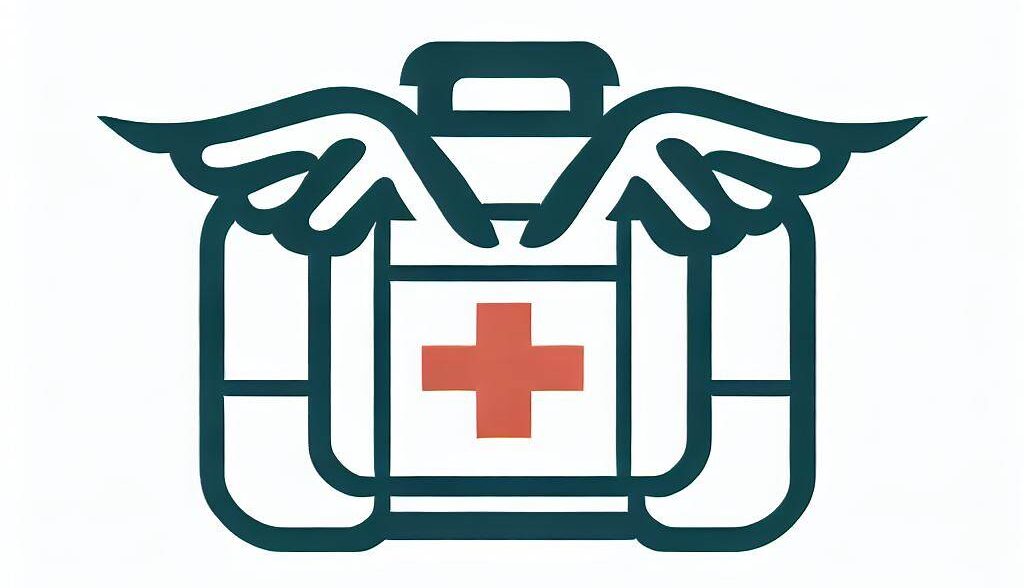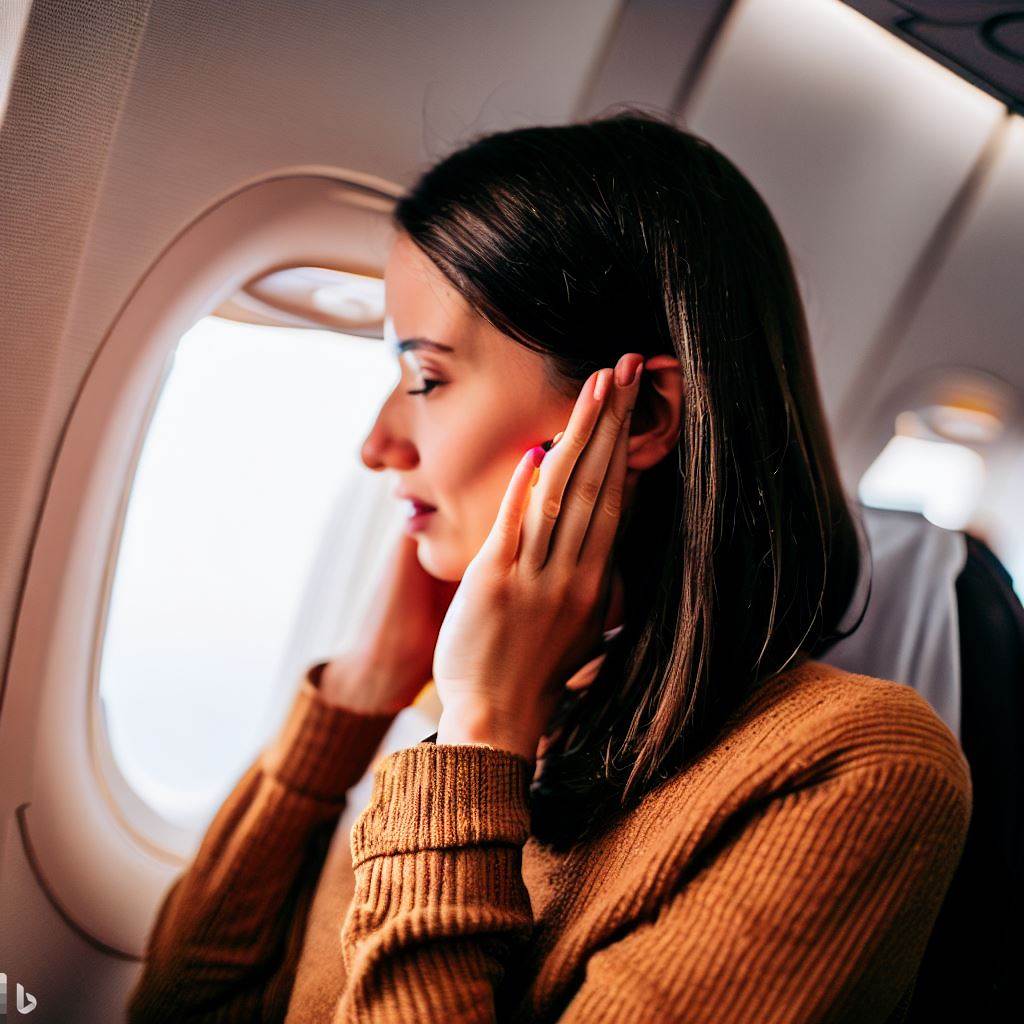Table of Contents
How Flying Affects Your Ears
Flying can cause ear pain to worsen if you have an acute ear infection. Air travel can cause the pressure in the airplane cabin to change rapidly, which can make it challenging to equalize the cabin pressure changes in your ears with that of the surrounding environment. This can lead to intense ear pain, dizziness, and even temporary hearing loss.
So can flying with an ear infection while on treatment safe? The answer is: It depends.
In some cases, flying with an ear infection can result in permanent hearing damage or a ruptured eardrum–turning your uncomfortable flight into an emergency. Symptoms of a ruptured eardrum include bloody or clear drainage from the ear, pus, severe earache, noise or ringing in the ears, hearing loss in the affected ear, dizziness, and facial weakness. In extreme cases, a ruptured eardrum could potentially lead to permanent hearing loss. Therefore, it’s crucial to understand these risks before deciding to fly with an ear infection.
You should consider precautions to minimize discomfort, such as visiting a health care provider for advice, taking decongestants or anti-inflammatory medication, staying hydrated, and using techniques like chewing gum or swallowing during takeoff and landing to help equalize ear pressure.
Understanding Ear Infections
Ear infections are more common in young children than in adults, but they can happen to anyone. There are different types of ear infections and the type will depend on if the infection is located in the outer ear canal or inner middle ear.
Otitis externa (external ear infection) or also known as “swimmer’s ear” is an infection that does not involve the middle ear space, also known as the space behind the tympanic membrane (eardrum).
Middle-ear infections (acute otitis media) is an infection of the middle ear space. It can be caused by bacterial infection or viral infections. This condition can lead to pain, difficulties in hearing, and sometimes, fever and drainage from the ear.
The fluid buildup that causes one of your Eustachian tubes (the canal that connects the middle ear to the back of the throat) to become swollen or inflamed is called otitis media with effusion, which is not an infection.
This build-up of fluid behind your ears or your child’s ears may not cause you to have pain, fevers, or pus, but could make your flying experience more challenging. This can be common with people coming down with colds.
Ascending to higher altitudes can cause worsening blockage in their ears because it makes it difficult for your ears to equalize pressure.
When you fly with an ear infection or simply with a blocked eustachian tube due to pressure in the middle ear fluid, it can cause ear barotrauma. Ear barotrauma is a condition characterized by discomfort or pain in the ears due to changes in air pressure, typically experienced during activities such as flying or diving. This situation can result in ear pain, vertigo (dizziness), or even temporary hearing problems if unrelieved.
When a small infant or younger child has ear pain, they may express it differently than adults and older children. Fever, increased fussiness or irritability, rubbing or tugging at an ear, and difficulty sleeping may be exhibited in smaller children.
While it’s best to avoid flying when you have an ear or sinus infection, sometimes it’s just not possible. If you find yourself in such a situation, don’t fret. There are ways to manage and minimize the associated discomfort.
Precautions To Take Before Flying
Potential Risks of Flying with an Ear Infection
Flying with an ear infection doesn’t always result in severe complications, but it can be very painful and uncomfortable. The high ear pressure caused by different altitudes while flying can lead to a ruptured eardrum. Symptoms of a ruptured ear drum include bloody or clear drainage from the ear, pus, severe earache, noise or ringing in the ears, hearing loss in the affected ear, dizziness, and facial weakness as a result of rapid change in altitude. If there is any concern for an ear infection, consulting with a healthcare provider regarding the safety of flying will be important to do, especially in younger children.
Delay flying until your symptoms resolve is the ideal situation. But if you must fly on a plane with an ear infection, certain precautions can reduce the risk of severe cases. First and foremost, you should visit a doctor before your flight for a thorough physical exam and get advice on whether any treatment or medication is necessary.
Taking a decongestant or anti-inflammatory medication may help reduce pain and blockage before a flight. It’s also essential to stay hydrated and drink plenty of fluids while flying. Chewing gum or sucking on hard candy during takeoff and landing can also relieve pressure on your ears. When you cannot avoid flying with an ear infection, consider the different ways how you can relieve pressure in your ears while flying.
The goal is to reduce pressure inside your ears and prevent an uncomfortable flight if air travel during an ear infection is absolutely unavoidable.
Clearing Your Ears During Takeoff and Landing
Fluid buildup or inflammation of the inner ear can cause reduced hearing during the flight. This can be alleviated by clearing your ears during takeoff and landing. Swallowing, chewing gum, or yawning frequently during the flight can help ears react to the changes in altitude. These activities stimulate the muscles that open your eustachian tubes, allowing the air pressure to balance out or equalize more effortlessly. This is the “ear popping sensation” you may experience when you exercise these muscles. This is helpful during takeoff and landing to help reduce pressure in your ears.
Using Nasal Decongestants
Nasal decongestants such as Flonase or Afrin can be helpful in reducing the inflammation that narrows your eustachian tubes. Using a decongestant nasal spray about an hour before takeoff and then following the medication’s usage instructions throughout the flight can prevent severe pain while flying.
It is imperative that you follow the product’s instructions if you will be using a nasal decongestant.
For small children, please consult with their pediatrician regarding decongestant use. Not all decongestants are safe to use for small children, so please discuss this case by case with either your pediatrician or pharmacist.
Prescribed Treatment Options
Seeking the opinion of your healthcare provider is important to help identify the type of infection and whether it warrants antibiotics. Delayed use of antibiotics is common because, for most ear infection cases, symptoms resolve after 2 to 3 days of rest, extra fluids, and over-the-counter pain relievers. Antibiotic use is only recommended if symptoms worsen or persist beyond 2 to 3 days of rest.
Treatment for outer ear infections (otitis externa) is different than treatment for infection of the middle ear or inner ear infections. Middle ear infections or acute otitis media may require you to use oral antibiotics and antibiotic ear drops. Sometimes steroid eardrops may be warranted depending on how severe the inflammation of the ear is.
Over-the-Counter Medications
Flying with ear infections can be painful. Over-the-counter pain reliever (ie, Advil or Tylenol), oral decongestants, and antihistamines (ie, Zyrtec or Allegra) can help decrease ear pain.
Decongestants can help loosen or dry up fluid from your nasal passages and clogged ear. This can prevent or decrease ear pressure buildup during changes in altitude. Antihistamines can also help dry up fluid in your nasal passages to help with the pain.
Remember that it is essential to consult with a healthcare professional before taking any new medication, especially if you plan on flying.
Always discuss with your child’s pediatrician or pharmacist regarding appropriate dosing as both the age and weight of your child play a role in how medications are dosed.
Other Remedies for Ear Discomfort
Using a humidifier, applying a warm cloth to the affected ear, and taking hot showers can help relieve some of the symptoms associated with ear infections. The warmth from a warm compress during the flight can help relieve pain if that is the main symptom. The heat from the compress can reduce congestion, alleviating pain and discomfort.
Keeping your ears free from external objects can help prevent direct trauma to your eardrum. This includes avoiding the use of Q-tips or headphones that require you to insert into the ear canal which could cause eardrum contact.
Maintaining oral hydration can help loosen and remove mucus from an ear. This is important in young children who may not want to eat or drink, so encouraging adequate fluids can help with ear pain during air travel. For young infants who are breastfeeding, try to offer breastfeeding frequently throughout the flight to help with ear pain. The swallowing action will help stimulate the eustachian ear muscles to open, providing relief from the pressure.
When to Seek Medical Attention
Signs of Complications
If you experience severe symptoms such as extreme ear pain, dizziness, fever, or bloody or white discharge from the ear, it’s critical to seek medical attention right away. You should postpone your trip until you get clearance to safely travel. These could be signs of more serious complications like a ruptured eardrum or a severe ear infection that requires evaluation by an ENT doctor. If you experience any of these issues with air travel, your eardrums after a flight should be evaluated immediately. Please seek medical attention as soon as you land.
Consulting a Healthcare Professional
If you have an upcoming flight and are showing symptoms of an ear infection, it’s advisable to see a healthcare professional before you travel. They should evaluate you directly, specifically checking your ears are free of infection. They can accurately diagnose your condition, prescribe appropriate treatment, and advise whether it’s safe for you to fly.
Final Thoughts on Flying with an Ear Infection
Avoiding flying with an ear infection may not be possible, but there are methods you can implement to prevent additional stress on your eardrum. By understanding the potential risks and taking the necessary precautions, you can manage the discomfort and ensure a safer journey.
Remember to keep yourself hydrated, swallow frequently, and use prescribed medications if necessary. If the symptoms persist or worsen, consult with your doctor immediately. Safe travels!







